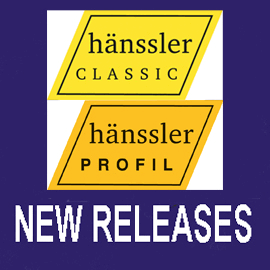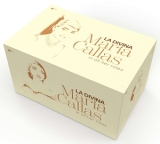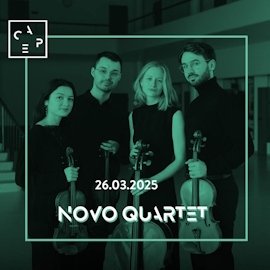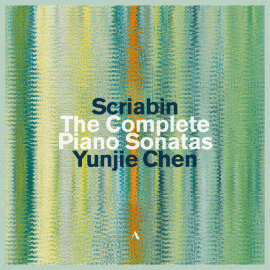Rund 50 Opern, 26 Studioaufnahmen und 23 Livemitschnitte enthält diese Box, die Warner zum 100. Geburtstag von Maria Callas herausbringt. Hinzu kommen Recitals, 14 aus dem Studio, 10 Livemitschnitte und drei Videos: La Divina in all ihren Rollen, in all ihrer Größe und mit Beispielen der stimmlichen Dekadenz zum Schluss der Karriere.
Die Mehrzahl der Aufnahmen hat eine einzigartige, unvergleichliche Stimme bewahrt, eine Stimme, die unter allen erkennbar ist, eine Stimme mit einer einmaligen Ausstrahlung, mit einem einmaligen Timbre, mit einem einmaligen Rollenverständnis.
Maria Callas hat Mimik und Gestik der Bühne übersetzt in Klangfiguren – ihr Gesang hat das, was die Engländer ‘face in the voice’ nennen, jene physiologische Unverkennbarkeit, dank derer ihre Stimme sofort identifiziert werden kann.
Dabei war die Stimme der Callas nicht unbedingt das, was man ein schönes Organ nennen kann. Sie besaß zwar einen enormen Umfang, eine große Durchschlagskraft, aber der Klang neigte, besonders gegen Schluss der Karriere, zu Schärfen und auch zu gelegentlichem Flackern. Aber die Callas war eben mehr als eine Stimme: sie hat nicht nur Klang erzeugt, sondern Charaktere dargestellt. Bis etwa 1960 hat die Callas alles gegeben, und dafür hat sie danach bezahlt, als die Stimme erste Abnutzungserscheinungen zeigte.
Die erste Oper in dieser Callas-Box sind die beiden Studioaufnahmen von Bellinis Norma unter Tullio Serafin (1954, 1964) und das scheint logisch, denn Callas war ja auch die Norma schlechthin. In der Sammlung gibt es aber auch die Liveaufnahme aus London, die 1952 gemacht wurde. Welche der drei Aufnahmen die bessere ist, darüber wurde schon viel diskutiert. Die 1954er Aufnahme ist spontan und hoch dramatisch, jene aus dem Jahre 1960, bereits in Stereo, ist etwas emotionaler, aber die stimmlichen Probleme der Sängerin sind schon unüberhörbar. Die Live-Aufnahme aus Covent Garden von 1952 ist durch ihre völlige Identifikation mit der Figur absolut elektrisierend.
Zwei weitere Bellini-Opern folgen, mit zwei weiteren Identifikationserfolgen und wirklich wahrhaftigen Charakterisierungen, I Puritani und La Sonnambula, beide unter Tullio Serafin. Diese letztgenannte Oper gibt es auch in einer Liveaufnahme aus Köln aus dem Jahre 1957 unter Antonino Votto.
Maria Callas sang die Rolle der Carmen von Bizet 1964 mit dem Orchester des Théâtre National de l’Opéra de Paris unter dem Dirigenten Georges Prêtre. Die Identifikation mit der Titelfigur der Bizet-Oper ist vollkommen und der Gesang total aufregend. Die Callas wird großartig unterstützt vom intensiven Dirigat von Prêtre. Neben ihr ist Nicolai Gedda ein leidenschaftlicher Don José.
Es folgen die exzellente Einspielung der beiden kurzen Opern Pagliacci und Cavalleria Rusticana. In der Rolle der Santuzza hatte sie 1939, als noch 15-jährige Studentin in Athen debütiert. In der Aufnahme mit Tullio Serafin ist sie zur vollblütigen Verismo-Heldin aufgewachsen.
Es gibt zwei Versionen von Ponchiellis La Gioconda mit Maria Callas, beide unter Antonino Votto, die erste von 1952 und die zweite von 1959.
Maria Callas hat die Rolle der Gioconda beide Male sehr subtil gestaltet, und sie besticht in beiden Versionen mit einer grandiosen Stimme und einer tiefschürfenden Charakterisierung.
Die Mimi aus Puccinis La Bohème hat Callas nie auf der Bühne gesungen, nur im Studio unter Antonino Votto: in den beiden ersten Akten kann sie die Figur nicht wirklich glaubhaft werden lassen, aber im letzten Aufzug ist sie großartig.
Die Cio-Cio-San, die sie 1955 unter Herbert von Karajan aufgenommen hat, ist sicherlich eine ihrer besten Leistungen: Sie zeigt das junge unbekümmerte Mädchen, wie es im Leid wächst und zum unvermeidlichen Selbstmord gelangt. Karajans Dirigat ist spannungsvoll und unterstützt jede Stimmung in dieser Oper.
Eine nicht weniger großartige Manon Lescaut, zweimal die Tosca, davon jene, zu Recht legendäre unter de Sabata sowie eine großartige Turandot unter Serafin sind die anderen Puccini-Studioaufnahmen dieser Box.
Maria Callas singt die Rosina in einer Aufnahme von Il Barbiere di Siviglia mit Tito Gobbi und Luigi Alva unter Alceo Galliera (1957). Hier wird die Tragödin zur koketten, komödiantischen und frechen jungen Frau, die sich eigenwillig gegen die Männerwelt durchsetzt.
Unter den Verdi-Aufnahmen ist die Aida unter Serafin zu nennen, mit einer stimmlich großartigen und intensiv darstellenden Callas.
Vom Ballo de Maschara gibt es eine gute Studioaufnahme, aber die Liveaufnahme, die ebenfalls enthalten ist, zeigt die Sängerin und ihre Partner in einer dramatischeren Interpretation.
Die Traviata war eine der Glanzrollen von Maria Callas. Und die Studioaufnahme von 1953 unter Santini zeigt sie vokal großartig, aber nicht ganz auf der Höhe ihrer Gestaltungskunst, mit der sie sich die Figur der Violetta in den Liveaufnahmen aus Mailand (Giulini) und Lissabon (Ghioni) zu eigen machte.
Neben einer guten Rigoletto-Aufnahme ist die Einspielung von Il Trovatore unter Herbert von Karajan ein absolutes Must, nicht nur wegen Callas als Leonora, sondern auch wegen Karajan, der Verdis Melodienfluss wie kein anderer in einen rauschenden Fluss setzt.
Unter den 23 Liveaufnahmen von ganzen Opern sind einige Titel zu finden, die nicht im Studio aufgenommen wurden und daher besonderes Interesse verdienen, so z.B. Bellinis Il Pirata, 1959 in New York aufgenommen unter Nicola Rescigno. Auch wenn die Stimme schon dekadent ist, bleibt ein großartiger Eindruck.
Legendär ist die Medea von 1953 aus Mailand, unter Leonard Bernstein. Es ist wegen Callas, dass Cherubinis Oper Medea überhaupt wieder bekannt wurde. Sie war ein kontinuierlicher Erfolg in der Karriere der Sängerin. Bernstein war in Mailand kurzfristig eingesprungen und musste die Partitur in nur fünf Tagen lernen. Das spornte ihn aber zu einer phänomenalen Leistung an, und zusammen mit Callas kam es zu einer Dramatik, wie sie wohl kaum je in einer anderen Vorstellung zustande kam.
Die Gluck-Opern Alceste und Iphigenia in Tauride wirken natürlich heute, wegen der Entwicklung der historischen Aufführungspraxis, etwas altmodisch, sind aber vokal wegen Callas doch interessant.
Highlights sind Donizettis Anna Bolena aus Mailand, Giordanos Andrea Chénier sowie die Lucia di Lammermoor von 1955, in Berlin unter Herbert von Karajan aufgenommen. Die Art, wie Karajan die Stimme der Callas trägt und sie zu ungehahnten expressiven Höhen bringt, ist wohl einmalig.
Die Live-Aufnahme von I Vespri Siciliani (ebenfalls die einzige dokumentierte Interpretation) entstand am 26. Mai 1951 in Florenz und wird von Erich Kleiber geleitet. Absolut hörenswert!
Ein Kuriosum ist die italienisch gesungene Parsifal-Aufnahme von 1950 aus Rom. Wagner war durchaus nicht fremd für die Sängerin: Sie sang Isolde, Brünnhilde und eben die Kundry, in der Callas ihre ganze Gestaltungskunst aufbringt, um die Rolle spannend zu machen. Ihr sensueller, lyrischer Gesang ist einmalig.
Die neue Warner-Box enthält auch sämtliche Recitals, aus dem Studio und live sowie drei Videoaufnahmen. Ein reich bebildertes und bestens dokumentiertes Buch von fast 150 Seiten begleitet diese einzigartige Warner-Edition. Damit ist dies die umfassendste Hommage an Maria Callas und eine wahre Schatztruhe, auch wenn alle Aufnahmen schon auf dem Markt waren, hier aber in neuen klanglichen Bearbeitungen besser klingen als je zuvor. Kein Opernfreund sollte sich diese Edition entgehen lassen, und man kann sich vor diesem Monument nur ehrfürchtig und begeistert verneigen.
Ich stelle die Box nun in Reichweite neben jene von Caruso. In diese hinein zu tauchen, kommt einer Eichung des Gehörs gleich. Das braucht man in einer Welt, in der zu gerne mit Superlativen gehandelt wird, wo Medialative oder sogar Minimalative angebracht wären.
Some 50 operas, 26 studio recordings and 23 live recordings are included in this box set, which Warner is releasing to mark the 100th anniversary of Maria Callas’ birth.
In addition, there are recitals, 14 from the studio, 10 live recordings and three videos: La Divina in all her roles, in all her greatness, and with examples of vocal decadence at the end of her career.
The majority of the recordings have preserved a unique, incomparable voice, a voice recognizable among all, a voice with a unique charisma, with a unique timbre, with a unique understanding of the roles.
Maria Callas translated the facial expressions and gestures of the stage into sound figures – her singing has what the English call ‘face in the voice’, that physiological unmistakability thanks to which her voice can be immediately identified.
Yet Callas’ voice was not necessarily what one might call beautiful. She possessed an enormous range, a great power, but the sound, especially towards the end of her career, tended to sharpness and also to occasional flickering. But Callas was just more than a voice: she not only produced sound, but portrayed characters. Until about 1960, Callas gave her all, and she paid for it afterwards, when the voice began to show signs of wear.
The first opera in this Callas box set are the two studio recordings of Bellini’s Norma under Tullio Serafin (1954, 1964) and that seems logical, since Callas was the Norma par excellence. But in the collection there is also the live recording from London, made in 1952. Which of the three recordings is the better one has been much discussed. The 1954 recording is spontaneous and highly dramatic, the 1960 recording, already in stereo, is a bit more emotional, but the singer’s vocal problems are unmistakable.
Not to be forgotten, however, is the live Covent Garden recording of Norma from 1952, absolutely electrifying for its complete identification with the character.
Two more Bellini operas follow, with two more identification successes and really true characterizations, I Puritani and La Sonnambula, both conducted by Tullio Serafin. This latter opera is also available in a live recording from Cologne in 1957 under Antonino Votto.
Maria Callas sang the role of Carmen by Bizet in 1964 with the orchestra of the Théâtre National de l’Opéra de Paris under the conductor Georges Prêtre. The identification with the title character of the Bizet opera is complete and the singing totally thrilling. Callas is magnificently supported by Prêtre’s intense conducting. Next to her, Nicolai Gedda is a passionate Don José.
The excellent recording of the two short operas Pagliacci and Cavalleria Rusticana follow. She made her debut in the role of Santuzza in Athens in 1939, when she was still a 15-year-old student. In the recording with Tullio Serafin, she grew up to be a full-blooded verismo heroine.
There are two versions of Ponchielli’s La Gioconda with Maria Callas, both conducted by Antonino Votto, the first from 1952 and the second from 1959.
Maria Callas made the role of Gioconda very subtle both times, and she captivates in both versions with a grandiose voice and profound characterization.
Callas never sang the Mimi from Puccini’s La Bohème on stage, only in the studio under Antonino Votto: in the first two acts she can’t really make the character believable, but in the last act she is magnificent.
The Cio-Cio-San, which she recorded in 1955 under Herbert von Karajan, is certainly one of her best performances: It shows the young carefree girl growing in suffering and arriving at the inevitable suicide. Karajan’s conducting is tense and supports every mood in this opera.
A no less magnificent Manon Lescaut, Tosca twice, including that justly legendary one under de Sabata, and a superb Turandot under Serafin are the other Puccini studio recordings in this box.
Maria Callas sings Rosina in a recording of Il Barbiere di Siviglia with Tito Gobbi and Luigi Alva under Alceo Galliera (1957). Here the tragedienne becomes a coquettish, comedic, and sassy young woman who willfully asserts herself against the world of men.
Among the Verdi recordings, the Aida under Serafin should be mentioned, with a vocally magnificent and intensely performing Callas.
There is a good studio recording of the Ballo de Maschara, but the live recording, also included, shows the singer and her partners in a more dramatic interpretation.
La Traviata was one of Maria Callas’s shining roles. And the 1953 studio recording under Santini shows her vocally magnificent, but not quite at the height of her art of shaping the character of Violetta in the live recordings from Milan (Giulini) and Lisbon (Ghioni).
In addition to a good Rigoletto recording, the recording of Il Trovatore under Herbert von Karajan is an absolute must, not only because of Callas as Leonora, but also because of Karajan, who cares for Verdi’s melodic flow like no other.
Among the 23 live recordings of entire operas are some titles that were not recorded in the studio and therefore deserve special interest, such as Bellini’s Il Pirata, recorded in New York in 1959 under Nicola Rescigno. Even if the voice is already decadent, a great impression remains.
Legendary is the 1953 Medea from Milan, under Leonard Bernstein. It is because of Callas that Cherubini’s opera Medea became known again at all. It was a continuing success in the singer’s career. Bernstein had stepped in at short notice in Milan and had to learn the score in only five days. But this spurred him on to a phenomenal performance, and together with Callas it produced a drama that is unlikely to have ever been achieved in any other performance.
The Gluck operas Alceste and Iphigenia in Tauride, of course, seem somewhat old-fashioned today because of the development of historical performance practice, but they are interesting vocally because of Callas.
Highlights are Donizetti’s Anna Bolena from Milan, Giordano’s Andrea Chénier, and the 1955 Lucia di Lammermoor, recorded in Berlin under Herbert von Karajan. The way Karajan carries Callas’ voice, taking it to unheard-of expressive heights, is arguably unique.
The live recording of I Vespri Siciliani (also the only documented interpretation) was made in Florence on May 26, 1951, and is conducted by Erich Kleiber. Absolutely worth hearing!
A curiosity is the Italian-sung Parsifal recording of 1950 from Rome. Wagner was by no means alien to the singer: she sang Isolde, Brünnhilde and precisely Kundry, in which Callas brings all her creative art to bear to make the role exciting. Her sensitive, lyrical singing is unique.
The new Warner box also includes all recitals, studio and live, as well as three video recordings. A richly illustrated and well-documented book of nearly 150 pages accompanies this unique Warner edition. This makes it the most comprehensive tribute to Maria Callas and a true treasure chest, even though all the recordings were already on the market, but sound better here in new sonic arrangements than ever before. No opera lover should miss this edition, and one can only bow reverently and enthusiastically before this monument.
I for now place the box within easy reach of those by Caruso. To dive into it is like a calibration of the ear. This is what one needs in a world in which superlatives are too readily used where medialatives or even minimalatives would be appropriate.
STUDIOAUFNAHMEN:
Vincenzo Bellini: Norma (1954 / Cinema Metropol Mailand, Dirigent: Tullio Serafin); Norma (1960 / Teatro alla Scala, Dirigent: Tullio Serafin); I Puritani (1953 / Basilica di Sant’Eufemia Mailand, Dirigent: Tullio Serafin); La Sonnambula (1957 / Basilica di Sant’Eufemia Mailand, Dirigent: Antonino Votto)
Georges Bizet: Carmen (1964 / Salle Wagram Paris, Dirigent: Georges Pretre)
Luigi Cherubini: Medea (1957 / Teatro alla Scala, Dirigent: Tullio Serafin)
Gaetano Donizetti: Lucia di Lammermoor (1953 / Teatro Comunale Florenz, Dirigent: Tullio Serafin); Lucia di Lammermoor (1959 / Kingsway Hall London, Dirigent: Tullio Serafin)
Ruggero Leoncavallo: Paggliaci (1954 / Teatro alla Scala, Dirigent: Tullio Serafin)
Pietro Mascagni: Cavalleria rusticana (1953 / Basilica di Sant’Eufemia Mailand, Dirigent: Tullio Serafin)
Amilcare Ponchielli: La Gioconda (1952 / Auditorium RAI Turin, Dirigent: Antonino Votto); La Gioconda (1959 / Teatro alla Scala, Dirigent: Antonino Votto)
Giacomo Puccini: La Boheme (1956 / Teatro alla Scala, Dirigent: Antonio Votto); Madama Butterfly (1955 / Teatro alla Scala, Dirigent: Herbert von Karajan); Manon Lescaut (1957 / Teatro alla Scala, Dirigent: Tullio Serafin); Tosca (1953 / Teatro alla Scala, Dirigent: Victor de Sabata); Tosca (1964 / 1965 / Salle Wagram Paris, Dirigent: Georges Pretre); Turandot (1957 / Teatro alla Scala, Dirigent: Tullio Serafin)
Gioacchino Rossini: Il Barbiere di Siviglia (1957 / Kingsway Hall London, Dirigent: Alceo Galliera); Il Turco in Italia (1954 / Teatro alla Scala, Dirigent: Gianandrea Gavazzeni)
Giuseppe Verdi: Aida (1955 / Teatro alla Scala, Dirigent Tullio Serafin); Un Ballo in Maschera (1956 / Teatro alla Scala, Dirigent: Antonino Votto); La Forza del Destino (1954 / Teatro alla Scala, Dirigent: Tullio Serafin); Rigoletto (1955 / Teatro alla Scala, Dirigent: Tullio Serafin); La Traviata (1953 / Auditorium RAI Turin, Dirigent: Gabriele Santini); Il Trovatore (1956 / Teatro alla Scala, Dirigent: Herbert von Karajan)
The First Recordings 1945 – Richard Wagner: Dolce e calmo aus Tristan und Isolde (in italienischer Sprache); Vincenzo Bellini: Arien aus Norma & I Puritani (Orchestra Sinfonica di Torino della RAI, Arturo Basile)
The Callas Rarities 1953-1969 – Arien von Wolfgang Amadeus Mozart, Giuseppe Verdi, Gioacchino Rossini, Gaetano Donizetti, Carl Maria von Weber (Monica Sinclair, Franco Corelli, Alexander Young, Orchestra del Maggio Musicale Fiorentino, Philharmonia Orchestra, Nicola Rescigno, Tullio Serafin, Antonio Tonini)
Operatic Arias by Puccini 1954 – Giacomo Puccini: Arien aus Manon Lescaut, Madama Butterfly, La Boheme, Suor Angelica, Gianni Schicchi, Turandot (Philharmonia Orchestra, Tullio Serafin)
Lyric & Coloratura Arias 1954 – Arien von Francesco Cilea, Umberto Giordano, Alfredo Catalani, Arrigo Boito, Gioacchino Rossini, Giacomo Meyerbeer, Leo Delibes, Giuseppe Verdi (Philharmonia Orchestra, Tullio Serafin)
Callas at La Scala 1955 – Arien von Vincenzo Bellini, Luigi Cherubini, Gaspare Spontini (Orchestra del Teatro alla Scala di Milano, Tullio Serafin)
Verdi Arias I 1958 (Verdi Heroines) – Giuseppe Verdi: Arien aus Macbeth, Nabucco, Ernani, Don Carlo (Philharmonia Orchestra, Nicola Rescigno)
Mad Scenes 1958 – Wahnsinnsszenen aus Anna Bolena (Gaetano Donizetti), Hamlet (Ambroise Thomas), Il Pirata (Vincenzo Bellini) (Philharmonia Chorus & Orchestra, Nicola Rescigno)
Callas a Paris I 1961 – Arien von Christoph Willibald Gluck, Georges Bizet, Camille Saint-Saens, Charles Gounod, Ambroise Thomas, Jules Massenet, Gustave Charpentier (Orchestre National de la Radiodiffusion Francaise, George Pretre)
+ »Callas a Paris II 1963″ – Arien von Christoph Willibald Gluck, Hector Berlioz, Georges Bizet, Jules Massenet, Charles Gounod (Orchestre de la Societe des Concerts du Conservatoire, Georges Pretre)
+ »Callas sings Rossini and Donizetti Arias 1963 / 1964″ – Gioacchino Rossini: Arien aus La Cenerentola, Guglielmo Tell, Semiramide; Gaetano Donizetti: Arien aus La Figlia del reggimento, Lucrezia Borgia, L’Elisir d’amore (Orchestre de la Societe des Concerts du Conservatoire, Nicola Rescigno)
+ »Maria Callas sings Mozart, Beethoven, Weber 1963 / 1964″ – Wolfgang Amadeus Mozart: Arien aus Le Nozze di Figaro & Don Giovanni; Ludwig van Beethoven: Szene & Arie « Ah! Perfido » op. 65; Carl Maria von Weber: Arie « Ocean! » aus Oberon (Orchestre de la Societe des Concerts du Conservatoire, Nicola Rescigno)
+ »Verdi Arias II 1963 / 1964″ – Giuseppe Verdi: Arien aus Otello, Aroldo, Don Carlo (Orchestre de la Societe des Concerts du Conservatoire, Nicola Rescigno)
+Verdi Arias III 1964 / 1965 / 1959″ – Giuseppe Verdi: Arien aus I Lombardi, Attila, Il Corsaro, Il Trovatore, I Vespri siciliani, Un Ballo in Maschera, Aida (Orchestre de la Societe des Concerts du Conservatoire, Orchestre du Theatre National de l’Opera de Paris, Nicola Rescigno)
LIVE-AUFNAHMEN:
Vincenzo Bellini: Norma (1952 / Covent Garden, Dirigent: Vittorio Gui); Il Pirata (1959 / Carnegie Hall New York, Dirigent: Nicola Rescigno); La Sonnambula (1955 / Teatro alla Scala, Dirigent: Leonard Bernstein); La Sonnambula (1957 / Großes Haus Köln, Dirigent: Antonino Votto)
+Luigi Cherubini: Medea (1953 / Teatro alla Scala, Dirigent: Leonard Bernstein)
+Gaetano Donizetti: Anna Bolena (1957 / Teatro alla Scala, Dirigent: Gianandrea Gavazzeni); Lucia di Lammermoor (1955 / Städtische Oper Berlin, Dirigent: Herbert von Karajan); Poliuto (1960 / Teatro alla Scala, Dirigent: Antonino Votto)
+Umberto Giordano: Andrea Chenier (1955 / Teatro della Scala, Dirigent: Antonino Votto)
+Christoph Willibald Gluck: Alceste (1954 / Teatro alla Scala, Dirigent: Carlo Maria Giulini); Ifigenia in Tauride (1957 / Teatro alla Scala, Dirigent: Nino Sanzogno)
+Giacomo Puccini: Tosca (1964 / Covent Garden, Dirigent: Carlo Felice Scillario)
+Gioacchino Rossini: Armida (1952 / Teatro Comunale Fiorenze, Dirigent: Tullio Serafin)
+Gaspare Spontini: La Vestale (1954 / Teatro alla Scala, Dirigent: Antonino Votto)
+Giuseppe Verdi: Aida (1951 / Palacio de Bellas Artes Mexico, Dirigent: Oliviero de Fabritiis); Un Ballo in Maschera (1957 / Teatro alla Scala, Dirigent: Gianandrea Gavazzeni); Macbeth (1952 / Teatro alla Scala, Dirigent: Victor de Sabata); Nabucco (1949 / Teatro San Carlo di Napoli, Dirigent: Vittorio Gui); Rigoletto (1952 / Palacio de Bellas Artes Mexico, Dirigent: Umberto Mugnai); La Traviata (1955 / Teatro alla Scala, Dirigent: Carlo Maria Giulini); La Traviata (1958 / Teatro Nacional de Sao Carlos Lisboa, Dirigent: Franco Ghione); I Vespri siciliani (1951 / Teatro Comunale Fiorenze, Dirigent: Erich Kleiber)
+Richard Wagner: Parsifal (in italienischer Sprache / 1950 / Auditorium della RAI Rom, Dirigent: Cesare Gui)
+ »Live in Rome 1952 / San Remo 1954 / Proch-Variations Torino 1951″
+ »Live in Milan 1956 & Athens 1957″
+ »In Rehearsal Dallas 1957″
+ »Live in London 1958 & 1959″
+ »Live in Paris 1958″
+ »Live in Hamburg 1959″
+ »Live in Amsterdam 1959″
+ »Live in London 1961 & 1962″
+ »Live in Paris 1963 & 1976″
+ »Julliard Master Classes »
+ »Alternate Takes »
+3 Blu-rays mit Recitals aus Paris 1958, Hamburg 1959 & 1962, Covent Garden 1962 & 1964
+DVD mit Libretti, Interviews, ausführlichen Texten





















